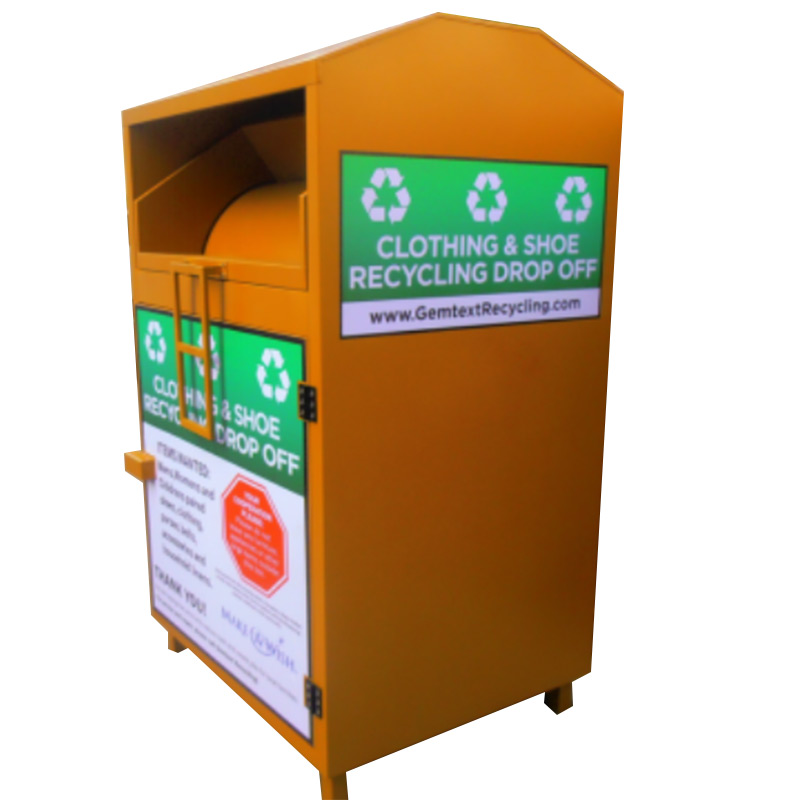Features and considerations for clothing recycle bins
2024-01-22
A clothing recycle bin is a dedicated container designed for the collection and recycling of used clothing and textiles. These bins play a crucial role in diverting textiles from landfills and promoting sustainable practices. Here are key features and considerations for clothing recycle bins:
1. Purpose: Clothing recycle bins are specifically designed for the collection of used clothing and textiles. They encourage people to recycle clothing rather than discarding it in regular waste bins.
2. Material: Clothing recycle bins can be made from various materials, including metal, plastic, or a combination of materials. The choice of material may depend on factors such as durability, weight, and aesthetics.
3. Design: The design of clothing recycle bins may vary, but they often have a large opening or chute to facilitate easy deposit of clothing items. Some bins may have a hinged lid to keep the contents protected from the weather.
4. Color and Branding: Clothing recycle bins are often designed with distinct colors to help users easily identify them. Common colors include green, blue, or a combination of colors. Some bins also feature branding or labels indicating their purpose.
5. Size and Capacity: Clothing recycle bins come in various sizes to accommodate different volumes of textiles. Bins placed in public spaces may have larger capacities than those intended for residential use.
6. Collection System: Clothing recycle bins may be part of a broader collection system managed by local municipalities, recycling companies, or nonprofit organizations. Some bins are strategically placed in public areas, while others may be located at recycling centers or drop-off points.
7. Sorting Options: In some regions, clothing recycle bins may have separate compartments or bags for different types of clothing items, encouraging users to sort their donations by material or type (e.g., clothes, shoes, accessories).
8. Educational Information: Clothing recycle bins often include educational information or signage to inform users about the types of items that can be recycled and the importance of textile recycling for environmental sustainability.
9. Accessibility: Bins should be easily accessible to the public to encourage participation in clothing recycling initiatives. Placing bins in convenient locations, such as shopping centers or near public transportation, can increase usage.
10. Maintenance: Regular maintenance is essential to keep clothing recycle bins clean and in good condition. Collection agencies or organizations responsible for the bins should empty them regularly and address any issues promptly.
11. Donation Options: Some clothing recycle bins are associated with charitable organizations or thrift stores. Users may have the option to donate their used clothing for resale or redistribution to those in need.
Clothing recycle bins contribute to reducing the environmental impact of textile waste by diverting used clothing from landfills and promoting a circular economy. As with other recycling initiatives, community awareness, education, and collaboration with local authorities are crucial for the success of clothing recycling programs.



